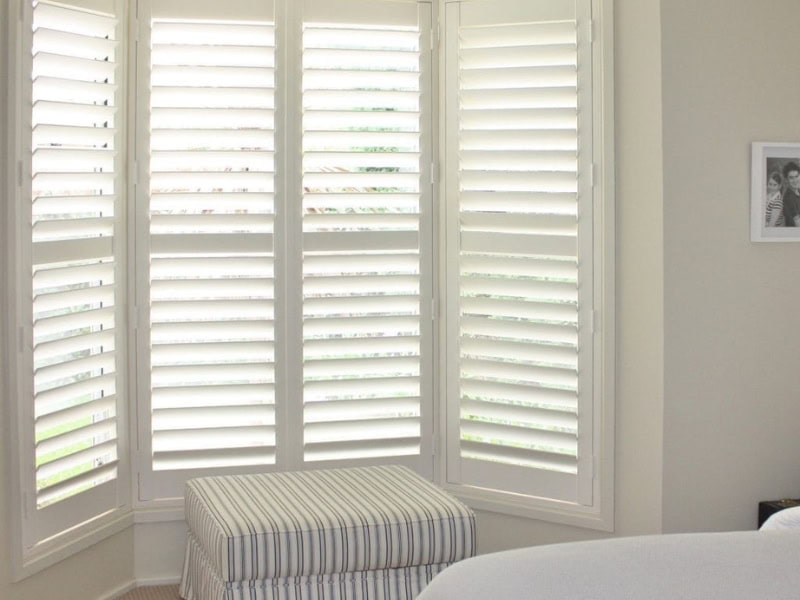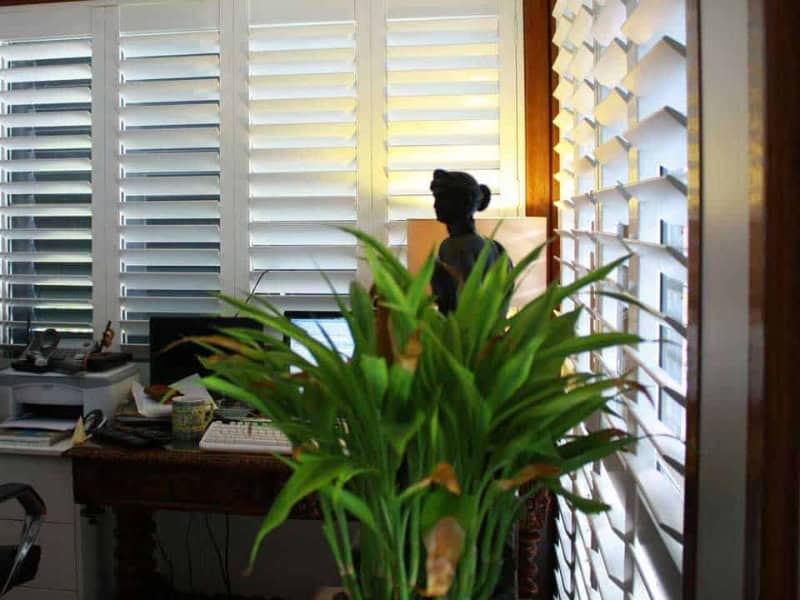Installing plantation shutters improves interiors by giving you better light control, privacy, insulation, and a refined design finish. This article explores how installing plantation shutters offers a durable, elegant window solution that enhances privacy, light control, energy efficiency, and design cohesion. By talking through everyday problems, comparing alternative window coverings, and pointing out real benefits, this write‑up shows how your home can feel more comfortable, stylish, and valuable. This article explores what makes plantation shutters a compelling choice for interiors that blend functionality and beauty.
What challenges come with not installing plantation shutters indoors?
Not having shutters on interior windows often leads to messy compromises in comfort, cost, and appearance from the very beginning. Here are the most relevant problems homeowners face:
- Harsh sunlight streaming in through bare windows or thin curtains can cause glare that ruins your ability to cook, read, or relax comfortably.
- Inefficient thermal insulation lets heat escape in winter and flow unchecked in summer, increasing energy bills without adding comfort.
- Privacy suffers when you rely on flimsy blinds or drapes that let silhouettes or street lights shine through at night.
- Constant upkeep—washing drapes, replacing bent blinds or struggling with drafts—takes time and effort, not just money.
Every room affected this way feels less inviting. Without proper window treatments, views may look fine, but the comfort level drops once you try using the room in all lighting conditions. If you’re thinking of fixing this, you might want to find premium plantation shutters for timeless interior appeal.
Why are alternative window coverings less effective than plantation shutters?
Let’s face it—most curtains, roller blinds, and roman shades just don’t measure up when it comes to what plantation shutters can do. Sure, they might look alright at first, but their function and durability often leave you wanting more. Here are the key shortcomings compared to shutters on interior windows:
- Curtains don’t always give you balanced lighting. Sometimes they block too much light, other times not enough—leaving rooms either dark and gloomy or far too exposed.
- Slatted blinds can start to bend or shift over time. When that happens, light sneaks through at odd angles, and the once-clean lines start looking messy.
- Fabric coverings soak up steam and grease in kitchens. They stain easily and can be a pain to clean—unlike shutters, which wipe down in seconds.
- Trends come and go fast. What looked stylish five years ago may now feel tired, while shutters stick around because of their timeless appeal.
Because these alternatives lack precision in light handling, durability, and ease of cleaning, their cost can creep up—not just in money, but in frustration. It’s helpful to know that knowing what indoor shutters are suitable for your home might change how you see window coverings altogether.
Could neglecting interior window upgrades reduce home comfort?
Yes—if you ignore windows that could be fitted with interior shutters, you’ll likely deal with discomfort, inefficiency, and wear on other parts of your home. Here are the outcomes you might encounter:

- Room temperatures fluctuate wildly, meaning your living areas feel too hot in the afternoons or too chilly early in the morning.
- Glare from low morning or harsh midday sun disrupts cooking, computer work, or child play in rooms without good shading.
- You might keep curtains or blinds closed more often than you’d like, losing natural light and making interiors feel gloomy.
- Over time, furniture upholstery, carpets, and artworks fade unevenly because windows let UV light through unfiltered.
Neglecting upgrades doesn’t just affect comfort; it also causes you to compromise style, utility, and healing moments at home. It becomes clear when considering the benefits of using shutters to control light in kitchen spaces, especially where light, heat and moisture all play a role.
Does installing plantation shutters improve interior privacy?
Yes—plantation shutters as doors deliver immediate gains in privacy, letting you control visibility in ways curtains or blinds seldom match. Here are the benefits you gain:
- You can angle the louvres to let in light but deflect views from outside, so neighbours or passers‑by don’t see inside while rooms stay bright.
- Solid materials like hardwood or composite shutters block silhouettes better than sheer fabrics or thin blinds.
- Even when partially open, shutters preserve privacy without sacrificing ventilation or ambient brightness.
- Well-fitted frames mean there aren’t gaps where light—or prying eyes—sneak through, unlike many blinds or drapery hanging loosely.
Installing plantation shutters lets you relax in rooms without worrying others can see in, especially at night or under street lighting. Comfort plus discretion becomes part of daily life.
Can installing plantation shutters enhance natural light indoors?
Absolutely—wooden shutters on windows give you control over the brightness, direction, and quality of light that enters your home. Here are the ways they improve lighting:
- You can tilt slats to aim sunlight onto counters or tables without facing glare that might cause eye strain.
- When fully open, shutters swing back, letting in full daylight for kitchens and living rooms—spaces where you want clarity and energy.
- Midday sun filtered through partially opened louvres produces soft, diffuse lighting—not harsh patches or dark shadows.
- In contrast, blinds often cast uneven stripes or blotches, while shutters deliver more even and consistent illumination.
Here’s a comparison table to show what you might get from plantation shutters versus regular blinds or drapes:
| Lighting Feature | Plantation Shutters | Standard Blinds or Drapes |
| Control over light angle | Precise adjustments | Limited—usually up/down or fixed tilt |
| Glare management | Smooth control through slat position | Harsh glare or uneven coverage |
| Uniform illumination | Balanced light across the space when slats are adjusted | Bright spots interspersed with shadow zones |
| Visual contrast and shadow | Gentle, subtle shadows enhancing textures | Sharp contrasts; sometimes unpleasant visuals |
Plus, this flexibility really helps when you think about interior design choices influenced by climate considerations, since sun angles, heat, and seasonal changes make a real difference in how a room feels.
Will installing plantation shutters add value to interior design?
Indeed—pairing plantation shutters with curtains adds value not just visually but in how your home feels, lives, and lasts. Here are the design advantages:

- Shutters offer structure and tidy lines; curtains add softness and movement—together they give depth without becoming busy.
- Finishes like white, off‑white, natural wood or even darker stains allow shutters to mesh with furniture or wall tones easily.
- Windows framed with shutters tend to become focal points—drawing eyes and enhancing other décor choices, from light fixtures to trims.
- Because shutters tend to last longer, they signal quality: visitors notice more than you think when fixtures look well-made and solid.
Homes with well-executed window treatments often feel more lifted, curated, and welcoming. That perceived quality often reflects in comfort, pride of place, and even resale value.
Final thoughts on improving interiors with plantation shutters
Putting plantation shutters in makes more than just aesthetic sense—it tightens up how you live daily. Whether you’re after better privacy, cleaner lines, or light you can actually control, shutters tick all the boxes. They work quietly in the background, making everyday moments more comfortable—from early morning coffee to Sunday afternoon naps. If you’re thinking about what suits your space best, it’s worth taking a moment to explore how Shutters Australia provides tailored shutter solutions.


